Week Twelve: Creative Conclusions
As my residency in Paris draws to a close today my week-long activity has been devoted to the polishing and installation of the sculpture for St. Merri church. I have given it the title "And he spoke and walked at his birth" in reference to the other versions of the nativity story in the Koran and in the lost gospels that claim the Holy Infant had indeed did that. My sculpture depicts the Infant, already crowned, standing up for the first time and at the moment of uttering his first words. I have used a new technique in the finish by highlighting its wood construction, and leaving parts, assembly areas unadorned, exposed to convey a sense of vulnerability. This is my translation of Rodin's non-finito technique in wood, something that I am given to explore more in my future pieces. In some ways the sculpture is a personification of my days during the residency. Like the work my sojourn is made of component episodes, which ultimately are assembled to make sense. But again like my treatment of the work, my experiences here are "unfinished" as they are for me only starting points for future projects. The fact that I will be undertaking another residency quite soon is indicative of the "non-finished" journey that I am undertaking for my craft and for my life views. It is always like that for artists, I suppose. The journey is always never finished, because the destination keeps changing. So it makes sense that Hemingway invents the phrase "a moveable feast" because Paris is a festivity that is always in transit. I will attempt to make a summary of my twelve weeks and my impressions. My first three weeks were all about exploring Paris, first by foot and then by Metro and bus. These initial days were all attempts to understanding the systems of the city so that I know where to buy supplies and food. Being mobile through a map was a very essential skill that Ive learned to improve here so that in the following months I was so familiar with the layout of this compact city I could navigate my way without too much references. By knowing my bearings I was able to explore Paris without the fear of getting lost. By the start of the fourth week and throughout November I proceeded with intensive research, mostly more in-depth observations of church art, cathedral sculpture and museum collections. My weeks were divided into themes, the first of which was Death which made me explore the major cemeteries of the city, especially Pere Lachaise. In addition to visiting numerous museums including the Louvre, Museé d'Orsay, Centre Pompidou, Museé de Cluny and Museé de Quai Branly,I also attended two international art fairs, FIAC and Slick Paris which gave me an idea of contemporary art in the market circuit. Halfway through the residency I had an epiphany that had profound effects on the way I think of my stay. I "dropped" the perspective of being a student of art history and a curator, terminating grueling weeks of internal strife between making notes of artistic works and making studies and plans for future series and studies. I trimmed all art historical concerns (which were bewildering) and revisited sites and museums with art projects in mind. Instead of looking for mental souvenirs, I sought out references and possible subjects. Thus I also began a series of works on paper and bought myself carving tools and wood. I started shifting to a more creative mode of response to my residency in mid-November. By this time I have finished more than a hundred works on paper, all of which I sent home by sea freight cargo. I also committed to making a sculpture for the Christmas display of the Church of St. Merri through Marguerite Lantz, an artist who oversees the artistic activities of the said church. In late November my wife joined me in France and together we spent four consecutive week of exploring churches and landmarks in Paris and also four trips outside the capital: to Rouen, Lisieux in Normandy; to Chartes; to Nevers and finally to Lourdes. All four excursions became points of comparative studies between churches and church art within different regions and different times. In Chartres we experienced the first snow of the winter season - something that never occurred again until the end of my residency. After my wife left for home in Manila, I spent my last week to finish the sculpture, which I have already narrated above. If I can cite the most important effects that this residency has had on me it is the affirmative persuasion of my artistic practice. I learned to think (and behave) as an artist in Paris inasmuch as my concerns are now more creative, more about projects - than documentary research. Also I realized how much of a Filipino I truly am, given that I have been reacting to the city with my vernacular habits and biases, highlighted by numerous encounters in the streets and the constant feeling of being seen as a foreigner (and being taken as a Mexican, Nicaraguan, Bolivian, etc) Thus by being a stranger in Paris, I realized where my true home lies. And that is where I am headed at the end of these twelve weeks. The sculpture is finished. And with that my residency comes to a close. Today is my 79th day in France and tomorrow, on my 80th day I will be installing the work in the southern chapel of St. Merri. It is the the 18th century wing of the church and because of this light flows from an oculus above. I have packed everything, and have decided to discard some things that I think are not essential to my travel home. Anyway Ive got enough photographs - no need for bigger keepsakes, except maybe for a small Eiffel tower for my collection. But that would be it. To be honest I am so anxious to go home. Paris is beautiful, but it is not home. But I am so thankful to have stayed here even for a few months. The journey is done. The lesson is learned.
I am about to start the final phase of the sculpture that I intend to donate to the Church of St. Merri. The idea started with a creche or a Nativity scene but as the work progressed I thought a single work representing my take on the Child Jesus would suffice. The sculpture is a Santo Nińo as we call it in the Philippines. I made slower progress on the work for the past month, owing to my schedule of visiting areas of interest outside Paris. The sculpture was already 70% done when I, together with my wife Grace, traveled to Normandy (Rouen and Lisieux), Eure et Loir (Chartres), Burgundy (Nevers) and the Mid-Pyrenees (Lourdes).
Together with my research in art in the churches of Paris and the works of religious art in the museums, these outbound travels in France gave new dimensions to my approach to my work. Among the many important accomplishments that I have done within the three month residency is the coalescing of my statements about rebulto-making into a compact art project. In short, I've understood the undercurrents of my artistic practice - from its history and its present state - to formulate various trajectories of work in the future. Non-art sources and references, especially literature, have contributed greatly to this endeavor, to cite a few: the works of Dumas, Zola, Balzac and Proust. I am also indebted to the writings of Abbot Suger, and the principles of Sacred Geometry in Gothic architecture. The sculpture may very well represent the point of departure for these new insights. It will serve as a prototype for a work that I intend to make before the year is out. Thus, I begin... South of Paris, The Way of Sainte-Bernadette
In 1858 fourteen year old Bernadette Soubirous reported 18 apparitions of "young woman in white with a blue sash" at a grotto of a massive rock formation on the backs of the Gave de Pau river. Since then the sleepy town of Lourdes in the Mid-Pyrenees became a world-famous pilgrimage site, especially for devout Catholic Filipinos. Without meaning to, yet given the opportunity, my wife and I headed to Lourdes for a three-day visit - even as we undertook a day-long trip to Nevers in Burgundy to see the remains of Bernadette, now a saint. It appears that my last trip outside Paris prior to the end of my residency is a re-connection to the Catholic culture, from whose pool of ritual and faith my boyhood (hence my point of departure as a man) took shape. The decision to go to Nevers and then to Lourdes was fermented in Chartres the previous week and an episode in Notre Dame where we attended the ceremony of veneration of the Holy Crown of Thorns. Also, the subject of my research - churches - had led to unexpected numerous encounters with relics, sacred sites and religious history in and around Paris. It was inevitable that even being decidedly aesthetic in my intentions, I was reminded again and again of Catholicism - the religion of my childhood. This Sunday Marguerite invited me to hear mass and also to be introduced to the community of St.Merri. It was a remarkable experience: Unlike the ceremony-focused masses back home, the service at St. Merri includes a community meeting after the communion, where various groups supported by this particular church could speak about their conditions to the rest of the community. St. Merri, I was told, supports various causes- from the indigent to immigrants- and even allow the homeless to take shelter in the church. It made me realize once again how the large spaces of churches and cathedrals are in fact a COMMUNAL locus, and explains why instead of fixed pews churches here have movable, even modular (as in the case of Notre Dame de Paris) chairs. At St. Merri, the people hearing mass are not shy to move closer to the center, even moving chairs to the effect. The church, I've understood finally, is the people and the building is an edifice to house the community - as it is then in the 12th century until now. When my wife asked Marguerite if she is Catholic, her reply gave me an insight. She said yes, she was baptized as a Catholic and although she doesn't practice it, she acknowledges it as part of her culture. It was an epiphany: Catholicism is a factor to my own vernacular culture; it is the community I grew up in (despite my latter dissatisfaction and my present indignation to organized religion); and the practice of veneration of images and saints is still the origin of my own craft of rebulto-work. Even though I do not agree to its hierarchical structure and its dogmas and traditions, I can acknowledge that Catholicism, especially Filipino Catholicism, is part of my culture, and therefore of my lifeworld. Thus reasoning that it would be unlike a Filipino to ignore a visit to Lourdes, we went to Nevers to see the incorrupt body of St. Bernadette and thus mentally prepared ourselves for a possible pilgrimage. Thus it came as a serendipitous event when Alliance Francaise de Manille told me that they were sending me additional funding to cover the costs of my balikbayan box in the previous week. (Having kept within the grant fund - plus my own personal fund - within activities in Paris and nearby cities, a trip to Lourdes was not in the works.) I decided to give this pilgrimage a go, perhaps a once-in-a-lifetime opportunity. Nevers The only reason we took a two-hour train trip to this small city in Burgundy is the Chapel of Bernadette where her remains are kept on display. A artist friend in the Philippines had told me how his father, a cardiologist, was immensely affected when he saw the body of the saint- who died in the late 19th century - looks like she just expired yesterday. Wanting to see this for myself and also to see how medieval churches looked like in Burgundy, we went to Nevers on a morning train. Unlike the northward passage to Normandy with all its quaint towns and houses, the landscape to the southwest was a continuous streak of flat fields with intermittent clusters of ancient forests and small, brick train stations. Nevers itself was an equally simple, quiet, almost rustic city, if not for its modern buildings and boulevards. The streets wind up, ascending and descending, on its hilly location and almost rushing towards the banks of the Loire, whose tributaries and arms flow nearby. The cathedral in the centre-ville is a block-like variation of the Gothic. Its stained glass windows feature more reds and yellows and almost a minimum of the blue that made Chartres famous. Most of the buildings are streaked with the bloom and patina of the industrial age: stripes of soot black and dull gray run down the walls from windows, corners and towers. The Espace Bernadette is housed in the convent of the Sisters of Charity. It is here where Bernadette, physically sick and resolute to evade public exposure brought by her fame, had taken refuge from Lourdes and here he died as a nun of the order. A replica of the grotto in pink and reddish sedimentary rock stands in front of the chapel and features a stone that came from the original site of the Lourdes visions. The Chapel was virtually empty when we entered it by 2pm (its afternoon winter opening time). Bernadette's quite small corpse is encased in a glass and ornate wood display case, and she is posed in an equally smaller gesture of private prayer. The wax layer on her hands and face gave the body a lifelike warmth, and she does look like she just died yesterday, despite the fact that this body had lain in the same space since 1925! (She died decades before). When we left I asked myself why I am not affected when two decades ago I would have been waxing ecstatic at such an encounter... Lourdes In a documentary on the miracles associated with the town, Lourdes was described by its host, Leonard Nimoy, as a "Catholic Disneyland", with all its garish shops and hotels catering to the needs of pilgrims for lodging and souvenirs who come in numbers of 3milion a year from March to October. Lourdes is second only to Rome as a chosen destination of the Catholic faithful, often due to the thousands of reported healing caused by drinking or bathing in the waters fed by a spring which was discovered by Bernadette herself, through the directions of the Virgin Mary. This is a surprising number of visitors, given that the population of the town is only a mere 17,000. But I was not to see this horde of pilgrims: it is winter. Instead of crowds and noisy streets I arrived in Lourdes almost a ghost town. All hotels and shops save for a handful are closed shut, boarded even. Without exaggerating, I can tell you that the stretch of hotels along the Gave de Pau river are all closed, without even staff to attend to say no. Our room even costs less than a fourth of its original price, when it had an excess of three beds in two rooms and with a kitchen. The sight of all these closed establishments is made even gloomier by the fact that Lourdes has the second-most number of hotels in France, following Paris. Having missed our train in the morning, we took the afternoon TGV train to Tarbes (plus surcharges) and arrived in a rainy evening in Lourdes. The trip took close to six hours. It was so late there were no taxis at the station and we walked to the hotel for ten minutes, getting lost because of the lack of clear and visible street signs at night. We walked to the famous Grotto at first light the following day. What I did notice immediately is the massive stone outcrop and the small alcove where the apparition was said to be seen standing. Every "grotto" replica in the Philippines, popular in the gardens and backyards of churches, erroneously depict the alcove as a cave. Even more erroneous is the popular image of the Virgin herself. The original image made by an artist in the late 1800's had to work with the taste of the Catholic church to represent her as a woman, when Bernadette herself said the apparition was of a "girl of her age" (read: 14). The whole area is collectively called the Sanctuaries, and its grounds are called the Domain. The Sanctuaries feature three Basilicas in addition to the Grotto (Grotte de Massabielle): The basilica of the Immaculate Conception (built on top of the grotto), the Basilica of the Holy Rosary (built beneath the first) and the Basilica of Pius X, a massive stadium-like subterranean structure that can hold 25,000 people at a time. Aesthetically I found the neo-gothic, neo-byzantine and neo-baroque style of the churches a bit contrived. The three spires of the Sanctuaries, eerily reminded me of the Gothic castle of Cinderella, giving the comparison with Disneyland a spoonful of truth. The underground basilica - modern in every sense - is more authentic in spirit and design. Yet despite these misgivings I found the ambience of the grounds both serene and refreshing. The view of the snow-capped Pyrenees completes this breathtaking vista, highlighted by the presence of Chateau-Fort, a decidedly medieval fortress atop a hill, in existence since the Romans first built an outpost there. (I declined the idea of going to the Chateau, now a Museum, due to the ugly fact that it was used as a prison for centuries...and I am not one to relish looking inside a prison). Besides it was beautiful to look at from below...with an imaginary row of trebuchets laying siege on the fortress! When we left in the afternoon of Saturday I took with me vials of its famous healing water, which is also quite nice to drink for its perpetual refreshing coldness. We also heard Mass at the Grotto and explored the Sanctuaries and walked along the Gave River where I swore I saw a fish leap twice into the air. Impressions After Lourdes I found myself, like Emile Zola a century ago, by the faculty of reason, "unable to believe". That seems harsh, but it is an honest impression. I did however like the experience of being in the real Grotto, and relished having to discover a laminated print of a Philippine flag stuck on a wall along rue dela Grotte. There was even a Filipino family who conversed with us on the platform of Gare de Lourdes and we briefly exchanged stories of what we both discovered in this journey. My wife said it was refreshing to be able to speak in the vernacular again. I agree: to think and speak in the vernacular is like slipping in one's comfortable old slippers. As my weeks now turn into a few days, I begin what a "ceremony of goodbye" to Paris...to France itself. My last report will be written on a KLM plane to Amsterdam in seven days, even as I type this essay on board a TGV back to Paris. There are some misconceptions about the process of art making that is so popular in movies and pulp fiction that people think they are true and universal. As an artist, a former curator and art administrator for more than two decades all together, these misconceptions rather damage the whole creative process than uplift it. Many unscrupulous dealers have used these myths to sell the work, but the truth is somewhat more complex than that. I mention a few, more popular ones here:
(1) The myth of the masterpiece and minor works People tend to think that artmaking is a hierarchical order of work. Drawings are the fundamental basic skill good only for studies and preparatory sketches; smaller works are minor pieces that are lined up towards the grand finale: the masterpiece. That may be true...if you were living in the years between 1200-1800, or a simply not a part of the 20th nor the 21st century...and your name is Rip Van Winkle. Even during those time artists have commented that often their drawings are better than their larger works and even regret having transferred the image in another media or form. The first thing people say about the Mona Lisa is that it seems a bit smaller than the expected. Ha! Its because they EXPECTED significance equals scale and vice-versa. They also expect a fully rendered oil painting to be superior to half-minute sketches. If an artist can explain himself he would say that NO MATTER THE MEDIA its the MANNER of representing truth that is the thing that he seeks to express. What is this truth? It is the expression of something universal of the human condition that is couched in the personal. Edvard Munch's oil sketch "The Scream" carries more of this truth than all the decorative canvases of the French School. Kathe Kollwitz's drawings and woodcuts strike the heart with its intensity, no matter how small, rather than the large public sculptures of the former Soviet Union that extoll the virtues of the working class masses. True artists do not strive to make masterpieces, but simply strive in and out of their studios, by a range of materials and techniques to serve them well in the search for this manner that is truthful. In short, Art is a continuous practice, where one work leads to another. It never really ends until the artist dies. There are no masterpieces, only works. (2) The myth of inspiration We often see a representation of an artist suddenly possessed by an idea and rushes off to work. In sappy love stories this possession is almost always triggered by person, a beloved, a crush. They say the artist needs inspiration...I say they only search for an excuse not to work. The first and foremost "inspiration" or motivation (which is the proper, non-romantic term for this) is the craft itself. To an artist the act of creating something, or even to think of possible ways of creating is the progenitor of the creative acts. When an artist or a doofus sees a beautiful woman (or a landscape) to draw or paint from it is not the loveliness of the subject that captures his or her fancy, but the EXPERIENCE OF CREATING IN THAT PRESENCE, or in a painter's case the opportunity of working with the feeling of infatuation as the agent of mixing colors. How many times can artists attest to feeling frustrated of not "getting it right" and destruction commences? Its the craft, people, that is the true love of the creative person and NOT its subjects - these are all fleeting. So the next time a shmuck comes to you with a request to paint or take your picture do not be flattered: you are simply a means to a creative end. It is the craft that inspires the artist, not the subject: just look at Van Gogh, Soutine or Otto Dix. (3) The ultimate myth of the artist-as-author and ego People fall for this myth more than anything else. They believe (along with artists) that they are the creators of their works and therefore their author. As such artists are regarded as geniuses, a class apart etc etc and their signature on works are valued so heavily...even when said work is crap. The core belief is the artist is in full control of the creative process. The artist is the creator of the artwork. WRONG. In fact the reverse is true. The ARTWORKS DEFINE THE ARTIST. The artist is a point of departure for the work. Unlike most gods who can create from nothing, artists have to make something out of something. And that something has to be understood in a language or visual scheme, if not within his time and community but in other times and other cultures. In fact, the meaning of the work is GENERATED by responses of viewers to the work. The artist can do only so much, but he can also do theatrics to make his work look better in certain contexts. Thus the artist, through his work, can have vested value by a community and therefore brings him a name to be identified. All artists seek this validation, deny as they may to death. Also, within the creative process itself is the factor of intuition and the presence of the subconscious. Half the time the artist does NOT have full conscious and rational control over the work: there are many accidents that lead to breakthroughs, some dreams can inform images that have not been perceived. Artmaking is not a rational function, if it was then I am sad to say, that is simply mathematics. These three are just among those deluded love storytellers use as a scheme for their character's follies of infatuation and aggrandizement. In fact the artist is different from the rest of humanity - the just feel different about their humanity. Most of the time we feel alienated, naked, like some monsters or a menace. And this is because the creative mind is apparently hardwired to think of possibilities, even breaking old patterns of thinking. If it wasn't for this facet, this spark of seeing what is possible, then we would have not evolved into the species that we are now: curiosity. And curiosity is the heart and essence of the creative and artistic venture. I have successfully fended off Christmas from my awareness despite all the tinsel and signs around me...until this week that is. First, there was the undeniable fact of below zero temperatures on the thermometer for most of the days and especially the nights. Second, Christmas sales all over the city were just way too enticing; ended up buying some bargains and found out they were products made in China! Finally, snow - but not in Paris, but in Chartres. This is my tenth week (have two more weeks to wrap up this sojourn) and it is a week of revisits and reconnections.
Revisits came in the form of going back to the Louvre, Musee Cluny and Musee Carnavalet during the first few days of the week. But instead of a survey of the collections I focused more on interesting items that were useful references to the studies of future work. From the Louvre I reviewed Italian and French paintings from the 16th to the 18th centuries, especially the work of Leonardo, Botticelli, Giotto, Ingres, Delacroix and David. Found myself keenly interested in depictions of the Parisian socialite Juliette Recamier whose portraits are in the Louvre and in Carnavalet. Also paid close attention to the "Primitive italians" and icon-painters of the thirteenth century. From Cluny I caught the exhibition on Medieval games from Europe and elsewhere and discovered many interesting objects - all the ancestors of modern board games and online strategy games such as MMPORG. Coincidentally I have been reading an e-book biography by Sylvia Nasar on American mathematician John Nash and found the fascinating world of games theory and strategy games like Hex, Kriegspiel and Nash. At Carnavalet I focused on historical and documentary paintings, both of which fell out of service from the art when photography took this role with sufficient muster and truthfulness. On Wednesday we caught the last few hours of the free exhibit Paris Vu Par Hollywood at the Hotel de Ville where various objects, film clips and memorabilia of Hollywood representations and recreations of Paris where shown. It was an interesting medley - barely chronological - or sketch of the rich relationship of filmmakers and Americans with Paris. It began with an early film reel documenting a promenade to the iconic Eiffel tower during the Exposition, to clips of Lon Chaney as the Hunchback of Notre Dame, curious theatrical fight scenes of the French revolution and the Terror and then the marvelous musicals with dancing Gene Kelley, Audrey Hepburn, Fred Astaire etc. On display were the iconic Giverny dresses and jackets of Hepburn as well as production notes and drawings from the films of Woody Allen including his latest, Midnight in Paris starring Owen Wilson and Rachel McAdams. (Found Midnight in Paris available in HD in a Youtube channel - found it funny, very Woody Allen - but also a bit irresolute and inconclusive as many characters just seemed to fall off like Hemingway, Fitzgerald and Picasso. Adrien Brody as Dali was quite a sketch, a superb rendering of the quirky genius!) Paris Vu Par Hollywood also made me think of how Americans actually packaged Paris for Filipinos. It was THEIR perspective and representations of the French (from the randy skunk Pepe Le Phew to Audrey Tautou) that shaped our notions of this nation and thus we shared their nostalgic pining and thought of the Paris as a cinematic wonderland where we could sing and dance like Astaire or Hepburn and shout Bonjour, Paris! and the locals would respond like a chorus line. Try dancing in Paris and you'd be stared at and even thrown some centimes if you are lucky. Paris is NOT Disneyland nor Hollywood. The highlight of the week is my two-day visit to Chartres, southwest of Paris. My obvious object of interest is the cathedral, also called Notre Dame. While Chartres is but an hour away and is considered a day trip in most itineraries, I wanted to observe the cathedral in various times of the day and took a hotel that was virtually beside it. Some impressions: The design of Chartres is simpler relative to its eponymous sisters in Paris and in Rouen but I found its mix of austerity and ornamentation in good restrained taste, I like it. There is also a sense of transition in Chartres: its Western and Southern portal sculptures tend to look Romanesque while the Northern doorway had the extreme polish of High Gothic. The difference in design between its older Moon tower (a tall tapering pyramid) and the Sun tower (ebullient, and heavily ornate) illustrates this feeling of being a composite. It makes me think of the Cathedral as a mature woman wearing trinkets of far more later time: a groovy lola. I have wanted to see the famous Sancta Camisa - the tunic of the Virgin Mary which caused this church to be built (or rebuilt) - but was barred from it by a thin strip of cordon due to continuous renovations of the central apse. I discovered how to "read" the famous stained glass windows of Chartres and for the first time I understood why French cathedrals and churches lacked rebultos - the windows and the architectural sculptures were the devices used to tell the story of Salvation! While attending services here and later in Paris, I understood that the French Gothic holy spaces tended to shape or be constituted of a community - the form of worship is communal, hence the emphasis on very wide and tall spaces that seem to envelope one and all. Unlike ours where Spanish colonists gave in to our penchant for intimate spaces of worship, hence our home oratorios, our rebultos, our sacramentals. Matters of the spirit in the Philippines tend to be a family affair, not much of a communal one. But what set the experience of Chartres apart was the fact that it was the locus of the first snow of winter. The encounter with snow for Filipinos of the tropics is the ultimate proof of "you are not home". It was quite picturesque to see my first snow in Chartres where the quaint character of this very small city of Eure et Loir lent it mystique, charm and lasting impressionability. With definite resolve I will come back to France in the future and definitely settle for some days in Chartres. A Tale of Two Cathedrals with the same Names
Ive spent the night at Chartes yesterday, thinking that the morning after will prove to be better in documenting the Cathedral and at least two other churches in the area. It was not the early evening at 430pm that defeated me, but the uncanny icy cold weather. My wife and I were unprepared for this as our last trip outside Paris in Normandy was just inconvenienced by rain. An umbrella would not do well against assaults of sidewinding gusts that were Siberian-cold. Last night I went to sleep dissatisfied with the renovation works of the Cathedral that had blocked access both to the Sancta Camisa (relic of a tunic of the Virgin Mary) and the Chapel of St-Piat. The only consolation we had was having the chance to see and hear a special Mass at the Cathedral - giving us a glimpse of Notre Dame de Chartres in action as a ceremonial space with a bishop presiding over the liturgy with a manic pace. Earlier we saw him walking across the southern portal to the Archbishops residence, and I was quite surprised to see a man in a red cape, a mitre and a staff walking briskly that I thought some prank was going on and someone dressed like St. Nicholas was doing rounds of the houses. The prankster turned out to be the officiator of the evening mass! We decided on waking up at 7am to have an early start in exploring this small city of 45,000 souls. On the map Chartres was a simple community with a single four-lane highway as its periphery and the hill of the Cathedral as its center. This divides the city center into two levels - lower and upper - which are connected together with five Medieval roads or steps called Tertres. These roads form part of two tourist circuits, one that passes through old, half-timbered houses and churches and the other follows the Eure river north to south going to the direction of Dreux, a town next to Chartres. Imagine our surprise when we woke up and erroneously thought it was 9am and opened the hotel windows to reveal a night sky of 5am...and Chartres was blanketed in snow! We hastily dressed up warmly (or thought we did) and walked out into the courtyard and stepped into the fresh powder, crunching beneath our every step! We had coffee and tea in small cups but the snow flakes fell into them and I had to drink my latte before it chilled. Because I was wearing running shoes the cold wet snow instantly seeped through my soles and into my socks - I called it quits after my feet hurt but returned to snow thumping in the grounds of the Cathedral after we had breakfast and the sun had risen casting a salmon-colored glow on every limestone building. One American priest had commented in a video that Chartres has the power to move people only that it does not have an effect because of certain barriers imposed by the visitor against this feeling. But once Chartres has caught a lacuna in this barrier, the senses are flooded and some feel being put at ease with attendant feelings of grace and peace. In Chartres today that image was the snow-laden Gothic cathedral. It was like the romantic paintings of Caspar Friedrich had suddenly become real and has swallowed me whole. I fell to a flurry of trigger-happy photo shoots, especially of the Northern portal, and of course, of the snowy landscape. It was after all our very first taste of winter. And my first playful deed with snow was to scoop up handfuls of it from the bridges along the Eure river and hurling at the ducks that swam towards me when I dropped a few ice balls in the water. After checking out of Hotellerie Saint-Yves we tried visiting the old gothic church of Saint-Pierre and the tangled mess of a church that is Saint-Aignan. Then in the rain we walked to the Gare, taking a long route back to Chartres Cathedral to say our goodbyes to this charming town that looked like Christmas Village overnight. The walk to the train station was wet, cold and feet-numbing. --- Back in Paris we half-expected the city to be covered in snow as well: we were wrong. It was just wet with rain. On the train ride back, we espied the grounds of Versailles covered in white powder. We unpacked quickly because we wanted to catch the public presentation of the Crown of Thorns at Notre Dame de Paris at 3pm. We arrived in the Cathedral just in time to queue in with others that were going to venerate the sacred relic. My wife was emotional as I was, well, curious. But what took me aback was the charged atmosphere of almost a fully packed church praying. This relic is actually a ring of rushes of a jujube plant, said to have been acquired by Louis IX, or St. Louis from Venetian bankers who kept them as collateral for a loan taken by Baldwin II, Latin Emperor of Constantinople. Thorns from this ring, counting to almost 70, are in possession of various churches in Europe. Despite the fact that there is no proof that this is the real thing worn by Christ, its the aura brought about by 1600 years of veneration that keeps this relic holy, at least in my regard. Despite this "barrier" of cynicism, I took the chance to touch the rock-crystal reliquary and stooped closer to examine the plant-forms within, feigning a form of obeisance. Yet when my forehead touched the glass I felt some inexplicable electricity that suddenly cleared my head of all thoughts. It was surprising enough for me to back away slowly, and silently I tried to understand this trigger and what lifeworld it had set off or memory it invoked within. I suddenly remembered my boyhood Catholicism, much the same way Joseph Campbell rediscovered his in Chartres. I recalled being extremely religious to the point of volunteering to serves as an altar boy at nine and a Bible student at ten! I was reminded of my childhood dreams of being a priest, or a monk, and my crazy adaptations of the Augustinian Rule to my daily life while in my first two years of high school. (I took the pseudonym of Augustine when I was 13 in honor of the saint) All these forms of piety I really tried hard to practice until I discovered how oppressive "acting" or "roleplaying" was in traditional religion. I told myself: I missed talking to a God sometimes, and I missed having a sense of being guided in times of embarrassing hardships. Then something that Neale Donald Walsch had experienced occurred; I heard an inner voice that responded to my nostalgic musings in an assuring tone: Go on, its okay. Move forward. I just hoped it was the guy behind me whispering to have a go at the relic. People have spoken of a supra-consciousness, or a higher mind that was also a complex within awareness. Was this it? Whatever it is the experience gave me an inner resolve that whatever I am working on isnt that bad at all. --- So the challenge of barriers have been won not by only by Notre Dame de Chartres but also by Notre Dame de Paris. We arrived at Chartres around 2pm just in time to check in at Hotellerie Saint-Yves, which is a former monastery a mere stone's throw away from the Cathedral. We left Paris at 12:09pm from Gare Montparnasse and admired the countryside landscape from the TER train bound southeast of the capital. It was sunny when we left Paris but it was 4 below and cloudy when we got off the station at Chartres downtown. The wind was fiercely chilly when we took the fifteen minute walk to the hill where the Cathedral is. Instantly we felt "away" from the metropolis. Chartres with its 45,000 citizens living in very organized apartments and homes around the Eure River and the hill of the Cathedral is quite a picturesque small town. Marikina City is even more populous with its 300,000. Again this town, the capital of the Eure-et-Loir department reminds me of Laguna. Chartres is very, very quiet, even at daytime and the groups of tourists who come over are a handful. And they stay inside the Cathedral most of the time.
Back in Paris I've done a lot of background research on Chartres Cathedral, mostly videos and online documentaries. It was the idea of Sacred Geometry of Chartres and the sacred landscape that got me going to Normandy as well. One big challenge this edifice offers is its impressive power to overwhelm the hearts of nonbelievers. I am trying to put this to the test. Even Joseph Campbell wrote that Chartres brought him back to the religion of his childhood in a mystical experience. We checked in the Hotel-Monastery and discovered that reviews of this place was true: it does look like a retreat house than a hotel. But the staff were nice and this with its superb location offsets the lack of TV, the slowness of its Wifi connection, the spartan and even corny design of the room (peach colored walls and floral red covers) and the 48€ a night charge. Straightaway we went into town to buy some sandwiches which turned up cheaper by half the price in Paris. Service was friendlier too. We began our walk by entering Chartres and I was extremely disappointed to discover a whole system of scaffolding had blocked the high altar and worse, it had drawn a cordon off the Sancta Camisa, the tunic supposedly worn by the Virgin Mary at the time of Jesus' birth. That the whole church was in fact built around the Sancta Camisa made me want to see this first and foremost...but I hope tomorrow will be luckier. The labyrinth was also covered by chairs. Instead I paid attention to the stained glass windows and immediately recognized the brilliance of its famous blue hues. The marble carving surrounding the main altar, occluded by the darkness, is nevertheless also superb in its execution. The portal sculptures of the West and South entrances I think have no comparison with the ones at St. Denis or Norte Dame de Paris. These Romanesque-Gothic figures are imbued with not only skill but utter faith! And to think all of these works are nameless, anonymous, forgotten. They are therefore made by now-invisible hands, their works testimonies to the belief that their names will be in the book of Judgment, on the side of the blessed. Tomorrow I have to explore the North portal and other sculptures for two things: The images of non-Christian philosophers like Aristotle, Pythagoras etc and the the vegetal design that some scholars say are a veritable botanical encyclopedia of the Medieval age. Chartres was once a Cathedral School and a center for learning, scientific, astronomical and theological - up until such time when the Church decided to shun scientific thinking as detrimental to faith. Smells like the theme of Dan Browns Angels and Demons... After the church we explored the historical quarter of Chartres and reached the old Porte Guillaume where we chanced upon a small store and bought sandwiches and a Coke for dinner. The town featured several half-timbered houses which we saw in Rouen but their presence here bears a quainter, more authentic feel. The streets are definitely narrower and the small, slow, Eure River was not as imposing as the Seine. In fact Chartres was so charming we thought we could live here, sometime in the future. Returning to the Cathedral by 6pm when the world suddenly became inky dark we chanced upon a very special mass, presided no less than a very manic bishop in his yellow cape and what appears to be the whole police force of the town and some other 100 people - which made Chartres Cathedral a better, more functional church than the ones we saw. They even played the pipe organs during Kyrie Eleison! --- So the question is: did Chartres get to me? Well...its too early to tell. But the town did make me wish I live here. One the things I have been thinking more frequently of in Paris is the idea of lifeworld, which I have read in the works of the philosopher Edmund Husserl. My take of the concept of lifeworld is a bit simplified. It is for me the subjective reality of a consciousness taken as a complex yet appearing as a constructed whole universe that is the information of what is real to a person at the moment of recollection and engaged action, and ultimately his choices.
A bit obtuse? A lifeworld is my truth, verified by my own consciousness, and where I shall draw my knowledge of who I and the world around me. This is not an aggregate philosophy, not even a complete credo of faith -it is the truth that matters to me at the moment when I need it, namely at those moments when I think of the future, before the moment of choice. The lifeworld is the existential summary of what I have experienced and what I can hope to experience. My lifeworld is, first and foremost, the universe of the possible, the probable, given the knowledge of what I am capable. The lifeworld is the personal truth which Friedrich Nietzsche wrote of as "truth that one can be dare, truth that one can bear". Because truth is never always easy: they are hard chunks to digest. For example, without a mirror or others to tell you what you look like, the whole knowledge of who you are lies in a visual and tactile spectacle of your front end and limbs (look down) and the tactile sensations that make up your backside. The eye, so they say, cannot be the object of its own sight. Consciousness is also the same: both can only be intuited and perceived indirectly. In other words what I look like really belongs to Others who see me! Because it is so much impractical to look in a reflection every minute of our lives to verify we are there. Yet that is what a lifeworld does: it makes a picture of me as seen and felt by Others and by my own self-experience - a intuited image of who I am, a composite projection, a constructed self-portrait of what I am probable at that given moment. This is quite easy to prove. How many times did I look into the weighing scale and discovered that I weighed more than I thought I should? How many times have we wished we had smaller hips, or lighter complexion or better income? That is the lifeworld: an expectation based on an intuition of what must be or probably be me. Now what makes me think of such a queer idea in this famously romantic and beautiful city? The idea was fired off by the sculptures and monuments of great men that dot the landscape. I found them in their niches at Hotel de Ville, astride bronze and stone horses on pedestals, or staring down at me from the pediments and roofs of the Louvre, and even gazing back at me from painted eyes in museums. Finally I saw them in the tombs, effigies, death masks and books. To speak plainly, I saw lifeworld at the fact of death. All these men and women are all dead. They no longer have probabilities, no extensions, no choices. They have become facts, although not everything can be known. But I, still existing as of this writing, am still alive. And my life is buoyed up by my lifeworld, my possibilities, the fuzziness of my future choices and the terrible truth that I cannot escape the absurd fact that I must choose. Leonardo, near his death (at 67), wrote: It seems all my life I have just been preparing for death...as a good day deserves good sleep...that a life well used begets comfortable death. But of course, even leaving behind wills or legacies cannot deprive us of "inutile passion" or pointlessness of our Deaths. Many times I have seen this in Pere Lachaise or Cimeterie Montparnasse: our deaths are not ours but belongs to our aggrieved ones. The only lifeworld left at the end of our tether is the fervent hope that we continue to exist after our expiration. Religion says this is the afterlife. The State says this is our legacy. As an artist I hope that my work shall matter to future generations...but what assurances do we have, really? I mean in 4 billion years, the Sun will eventually die and the earth will be destroyed. What legacy is left when my work - and everyone else's is shredded to molecules, atoms and energy? (My atheism stems from that cosmic fact - our notions of afterlives and heavens and what not will be but stardust at the end of a cosmic cycle- why bother with deities?) YET, what the idea of lifeworld does is to do away with all our hopes of extension or of perpetuity. Lifeworld is the reality, THE reality of our present, the now, which is occluded both by memory and anticipation. Well to say it in another way: what I am experiencing at the moment is a spectrum of memory-projection: who I think I am and where I think I should become. And this experience of lifeworld is not a grand perspective of our history and dreams, it is a fluid, ever-changing, ever-responsive, autonomous episode of now, then now and now. And "now" is just a property of "here". I can never be at a certain time without being in a certain place, and moving at a certain rate of distance and duration. It is not a matter of saying, that it is midnight, and I am in a chaise lounge in Paris. Rather if appears like: the sensation of sitting on a chaise lounge with a darkened sky before me, sleepiness setting in. Which is an episode that will pass as soon as I decide to sleep. Then, clarity settles with wakefulness: the experience of last night is only now a memory - like I have transited from one space-time to another. Even my sensations have changed, as I no longer feel sleepy. Am I the same person as last night? Of course not. My lifeworld is no longer that of a sleepy person in Paris. This is what the Buddhists might say is the "impermanence" of self. In fact the person who wrote the first paragraph of this essay is no longer the same person who is writing these lines, inasmuch as you are no longer the same reader who began his perusal and the one raising eyebrows at this incredulous statement. So what is the point of this essay? Nothing but an exercise of being aware of the transitoriness of existence and the probabilities that surround our own lives. It may seem that we are like the electrons - we are never in one place, we are in a cloud of possibilities. The lifeworld is that cloud. That cloud is us. |
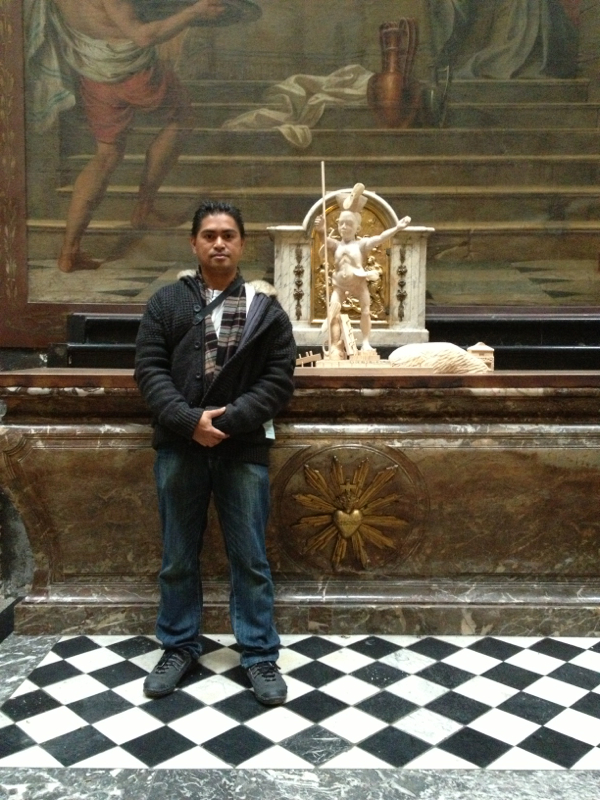
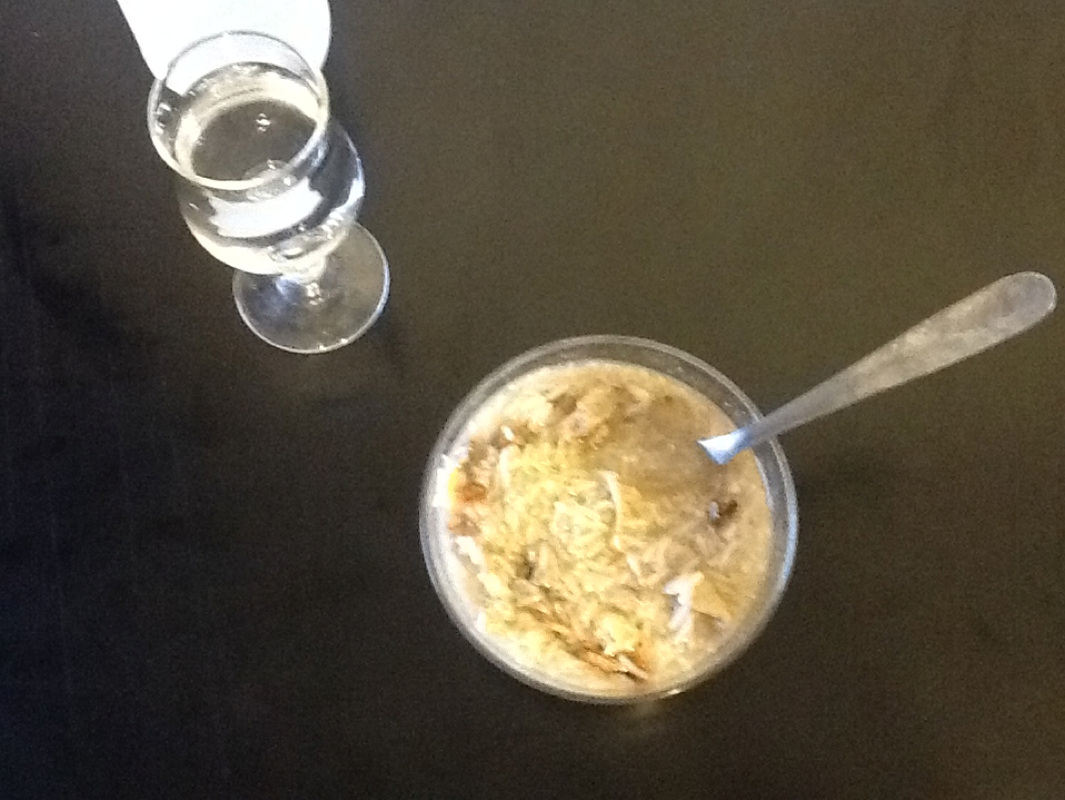
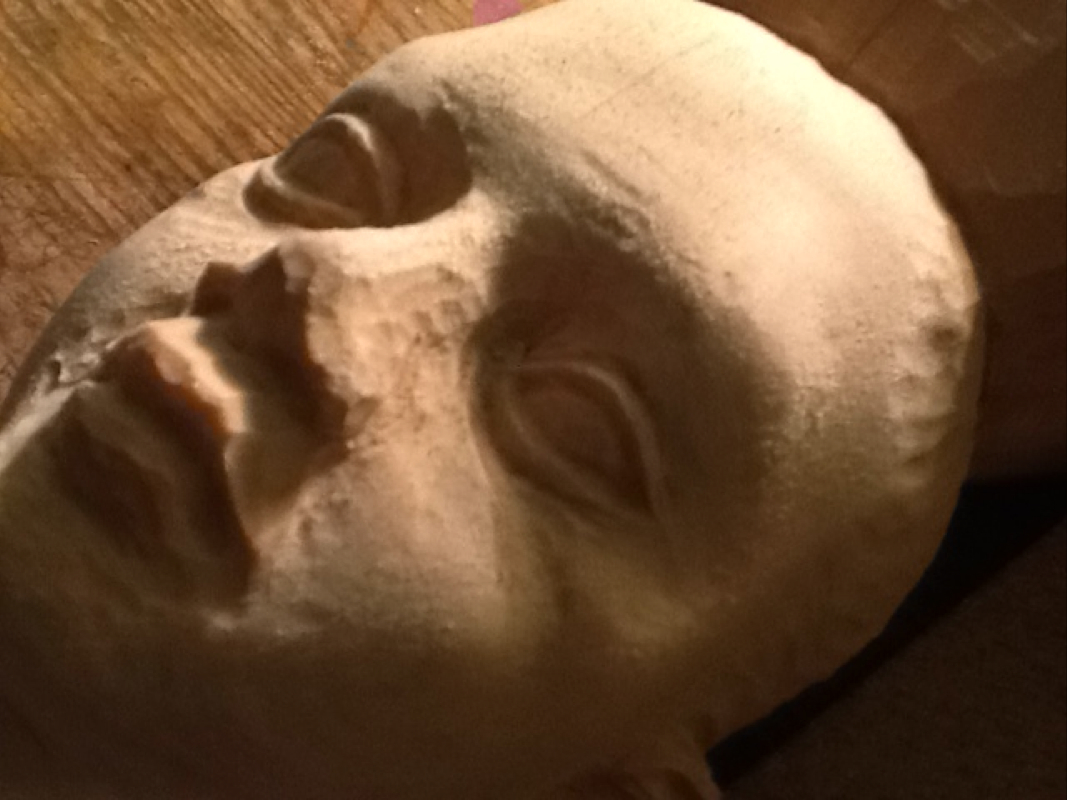
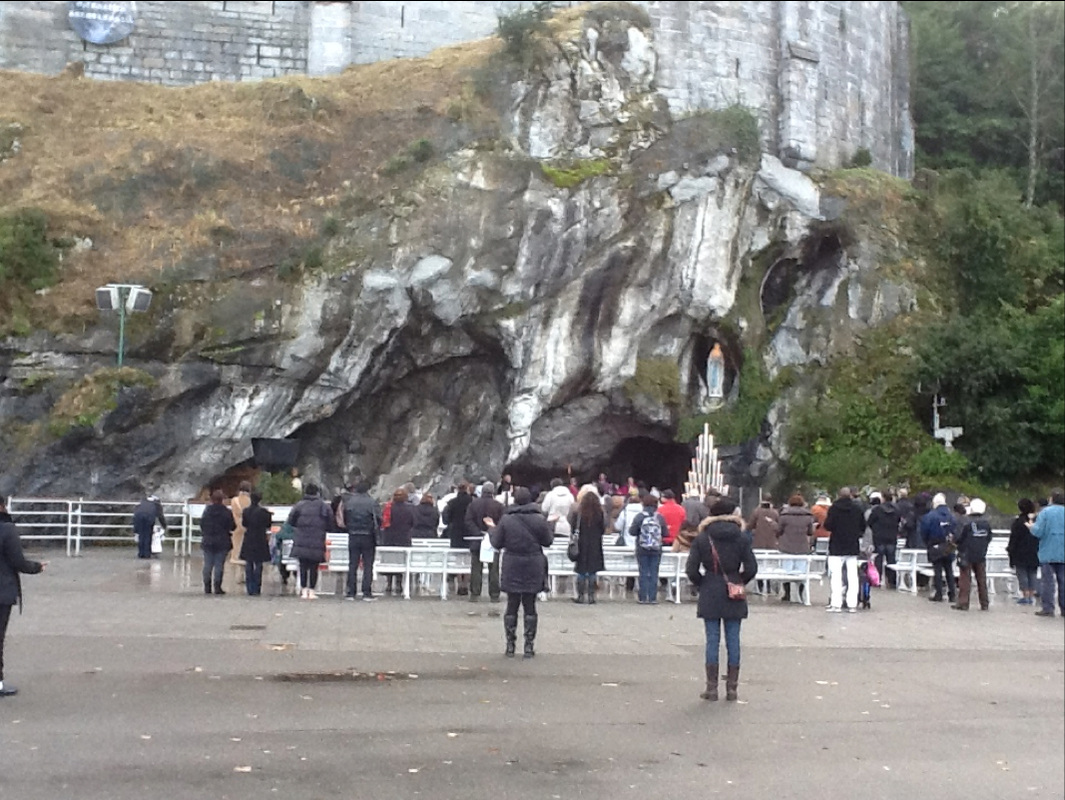
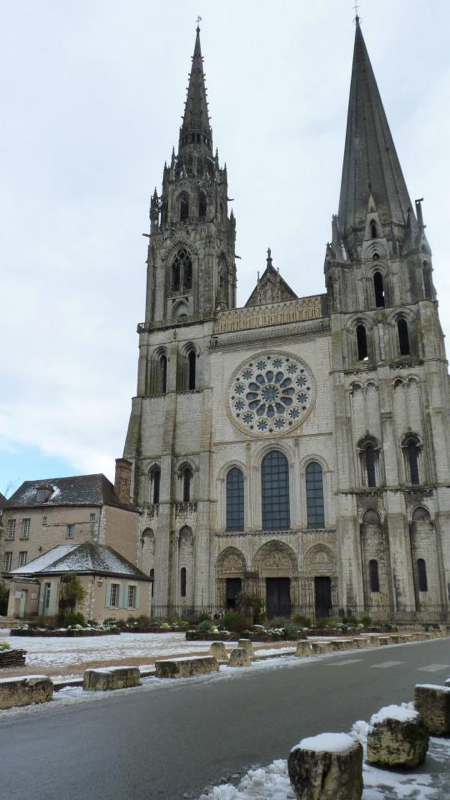
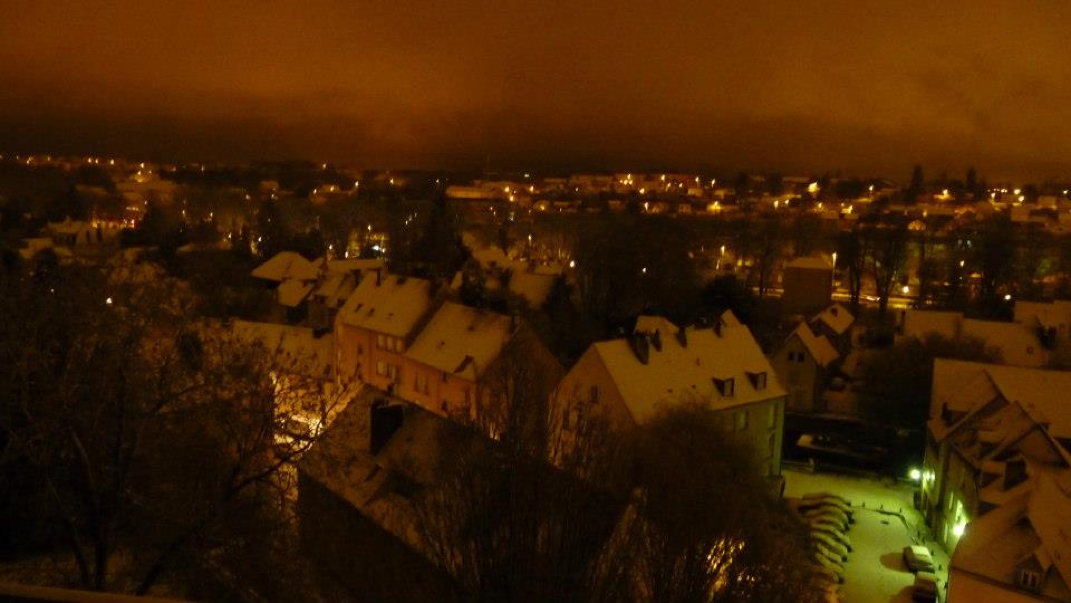
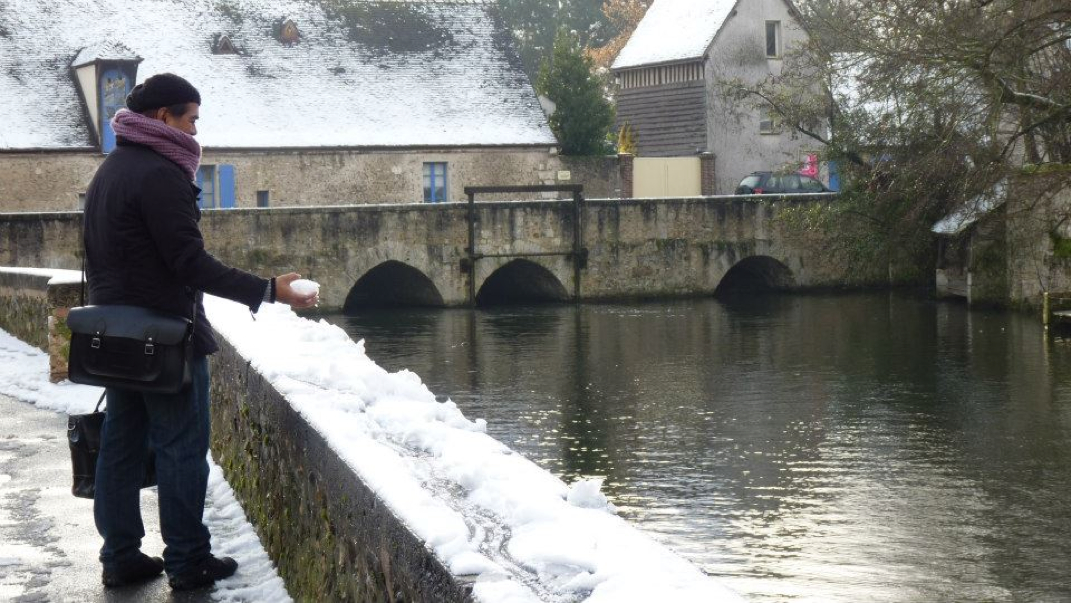
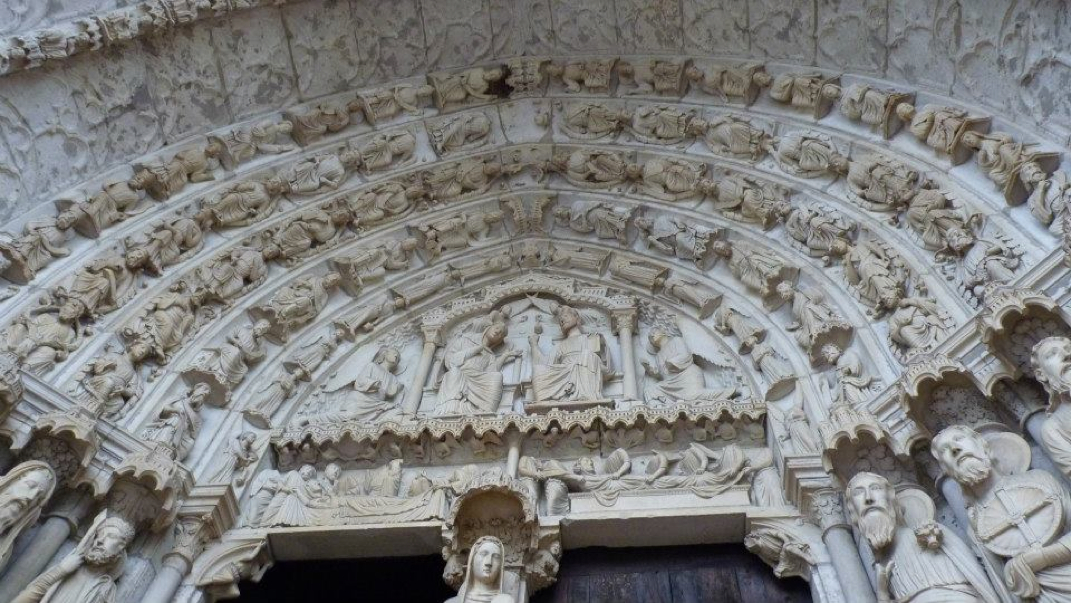
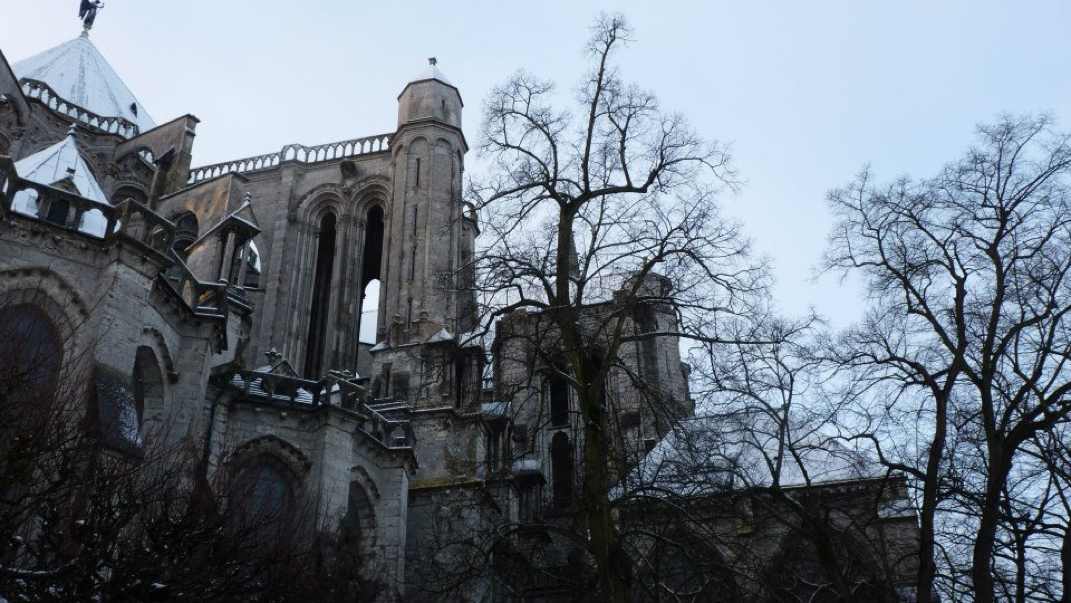
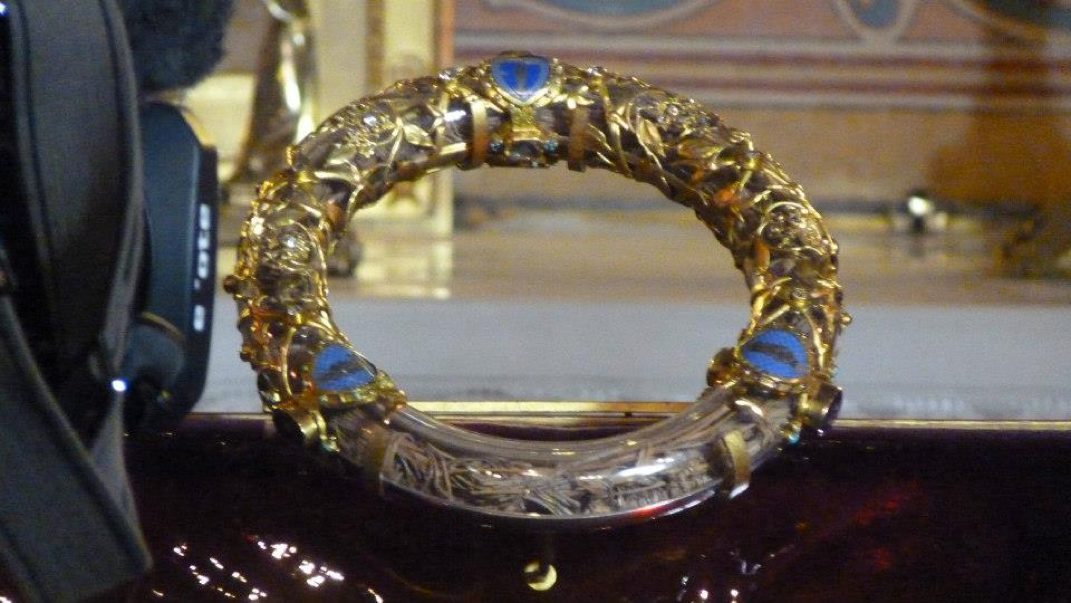
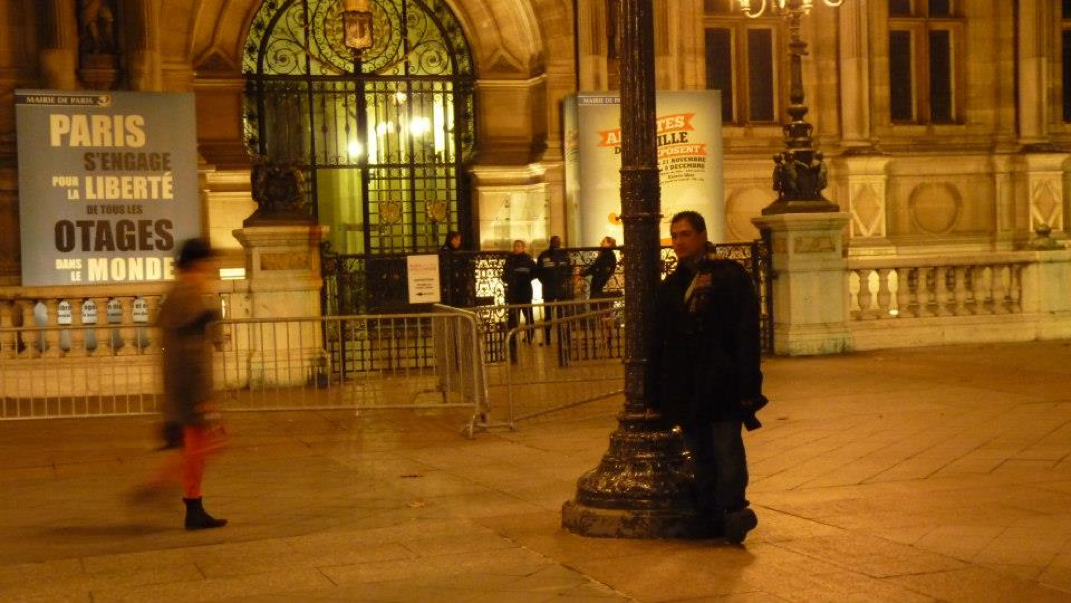
 RSS Feed
RSS Feed